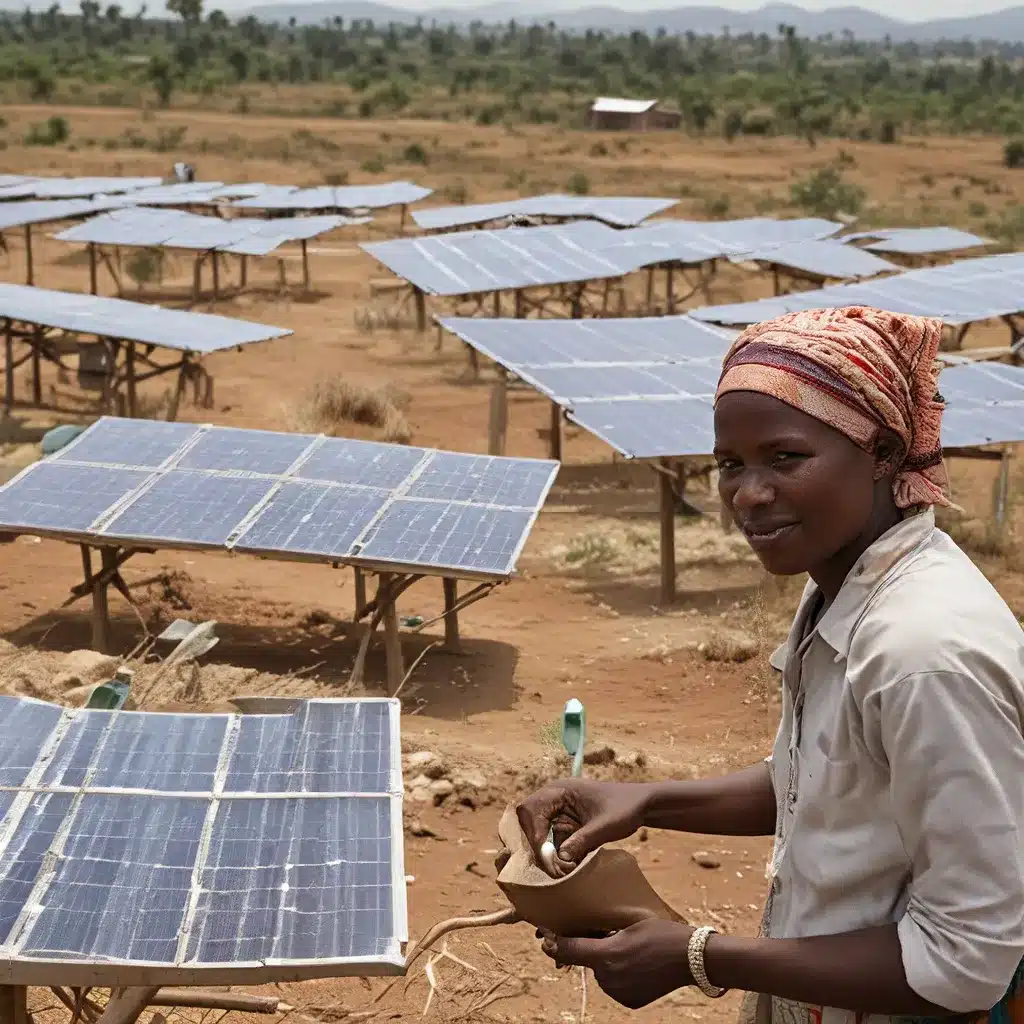
Powering Progress: Navigating the Renewable Energy Landscape
As I delve into the realm of renewable energy solutions, I’m struck by the immense potential it holds to transform the lives of millions across the developing world. It’s a story of hope, innovation, and the relentless pursuit of a more sustainable future.
Let me paint you a picture. Imagine a village in a remote corner of Africa, where families have long relied on candles and kerosene lamps to light their homes. The air is thick with the fumes, posing serious health risks, especially for the children. But what if I told you that this very same village could soon be powered by the sun’s abundant rays, lighting up homes, powering schools, and fueling economic growth?
This is the reality that renewable energy is ushering in, and it’s a revolution that’s gaining momentum every day. The United Nations has made it clear: moving towards sustainable modern energy will require that renewable sources make up 60% of power generation by 2030. This ambitious target is not just a lofty goal – it’s a necessity if we’re to address the pressing issues of energy poverty, climate change, and sustainable development.
Bridging the Energy Access Gap
One of the most pressing challenges facing the developing world is the energy access gap. Across sub-Saharan Africa, for instance, every second person still lives without access to electricity. This is a staggering statistic, denying life-transforming opportunities to millions of people.
But the solution is within our grasp. Renewable energy technologies, such as solar and wind power, are now cheaper to build than fossil-fuel power plants in 85% of the world. This means that communities once left in the dark can now leapfrog the traditional grid and harness the power of the sun and wind to light up their homes and power their businesses.
The United Nations Environment Programme has emphasized the critical role of renewable energy in closing the energy access gap and driving sustainable development. By increasing access to clean, efficient, and affordable energy, we can unlock a world of possibilities – from improved health and education to economic prosperity and enhanced resilience to climate change.
Overcoming the Challenges
Of course, the path to universal energy access is not without its challenges. Developing countries often face obstacles in securing the necessary financing, technology, and policy support to scale up renewable energy projects. The IEEFA report highlights the potential of blended finance – a strategic combination of public and private capital – to bridge this gap and unlock the true potential of renewable energy.
But the challenges go beyond just finance. Sustainable energy transitions require a holistic approach, addressing issues like energy efficiency, sustainable cooling, and the reduction of short-lived climate pollutants. It’s a complex puzzle, but one that we must solve if we’re to achieve the Sustainable Development Goals and create a more equitable, resilient, and prosperous world.
The Role of Innovation and Partnerships
As I delve deeper into this topic, I’m struck by the power of innovation and the importance of cross-sector collaboration. Technological advancements in renewable energy, energy storage, and digital solutions are paving the way for leapfrog moments in the developing world. From the potential of Firewinder’s sustainable energy solutions to the transformative impact of Google’s Digital Sprinters framework, the future is brimming with possibilities.
But innovation alone is not enough. Effective partnerships between governments, the private sector, civil society, and international organizations are crucial to driving progress. By aligning incentives, sharing knowledge, and mobilizing resources, we can create the conditions for scalable, sustainable, and equitable energy solutions.
A Just Transition for All
As we march towards a renewable energy future, it’s essential that we do so in a way that is inclusive and just. The transition away from fossil fuels must prioritize the needs of the most vulnerable communities, ensuring that no one is left behind. This means investing in local capacity-building, empowering youth, and respecting the rights and traditional knowledge of Indigenous peoples.
Damilola Ogunbiyi, the Special Representative of the UN Secretary-General for Sustainable Energy for All, eloquently captures this sentiment: “The transition must be just, where those who have contributed least to centuries of fossil fuel emissions must be protected and assisted by those who have benefited most.”
A Renewable Future, A Sustainable World
As I reflect on the transformative potential of renewable energy, I’m filled with a sense of optimism and determination. This is more than just a technological revolution – it’s a fundamental shift in the way we power our world, with far-reaching implications for human development, environmental sustainability, and global equity.
Sure, the challenges are formidable, and the road ahead is not without its obstacles. But the United Nations has set the bar high, and I believe we have the ingenuity, the resources, and the collective will to meet this moment.
So, let’s roll up our sleeves and get to work. Let’s bridge the energy access gap, power progress, and build a more sustainable, equitable, and resilient world for all. The future is ours to shape, and the time to act is now.

